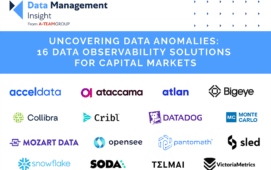Cloud computing may have become a buzzword for the industry but despite some reservations in the market about latency, it does have potential in an enterprise data context, agreed panellists at A-Team Insight Exchange in London this week. Market participants are seeking to streamline their usage of vendor data feeds and reduce their costs and are using private clouds to share data on an enterprise wide basis, explained Kendale Systems and Services’ principal consultant John Best.
Best contended that cloud computing is representative of a convergence of technology approaches in the market, combining grid technologies with virtualisation. “Firms are using private clouds to fine tune their own performance, bringing grids together in a cloud context that is hosted internally by the user,” he explained.
A-Team Group’s Pete Harris explained that the “market data cloud” is also becoming a much more prevalent term within the industry because of the desire of the vendor community to develop their own “cloud story”. However, only a few vendors have sprung up to specialise in this space, including Xignite. “The use of private clouds for reference and end of day data via the provision of web services such as those offered by vendors including Xignite is an emerging trend within the market,” he said.
Activ Financial Systems’ EMEA managing director David Hann noted that the significant increase in market data volumes and the pressure on margins within the market would likely force more firms to consider the cloud or managed services option. Activ pitches itself as a vendor available to do the heavy lifting in this regard in order to manage the data flow, along with its selected vendor partners.
Combi Cryan, head of business development for global data products at NYSE Technologies, added: “What firms are willing to pay for has changed over recent years as the market has got tougher and there is now a great deal of focus on getting value for money. This is why hosted solutions provide a good model for meeting these expectations. Firms are getting more sophisticated about how they manage their costs.”
However, Cryan noted that cloud’s potential beyond the back and middle office may be limited: “It can’t deliver high performance due to issues related to latency, which is predicated on networks and physical location.”
Best disagreed with this statement and contended that high performance technologies could sit within an overall cloud framework. “For algorithmic trading you have to look at every link in the chain, not just one point and therefore a blended technology approach is best. Cloud computing could sit as part of an overall toolkit,” he explained.
Subscribe to our newsletter




